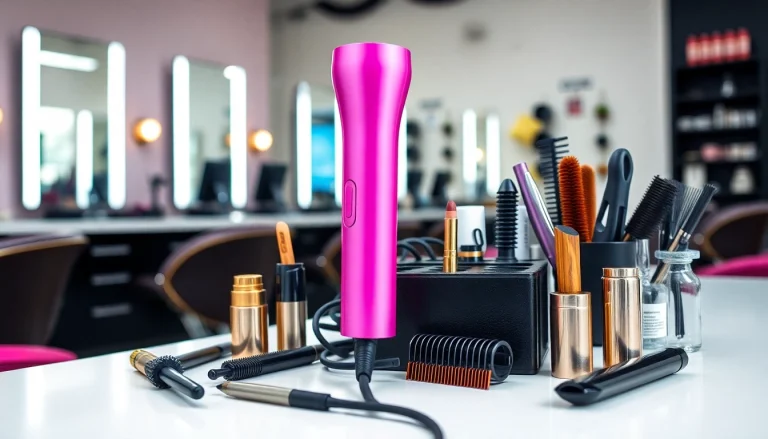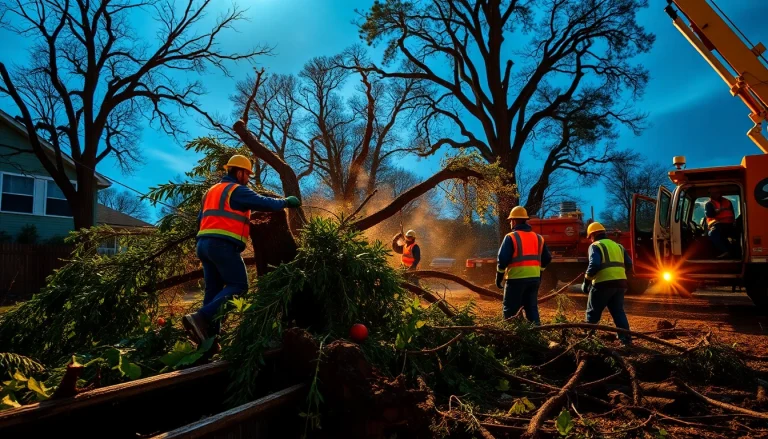Understanding Air Hoses and Fittings
What Are Air Hoses and Fittings?
Air hoses and fittings are crucial components in any compressed air system. These accessories function as the lifeline of pneumatic tools, enabling the transportation of compressed air from the source— like an air compressor— to a variety of tools and machinery. They are essential for efficient operation in both industrial and automotive applications. Understanding the specifics of air hoses and fittings can help users select the right products for their needs, ensuring performance, safety, and longevity in operations.
Choosing the correct air hoses and fittings is vital to maximizing efficiency and reducing work downtime.
Types of Air Hoses: A Comprehensive Overview
The diversity of air hoses available in the market can be categorized based on material, construction, and specific application.
- Rubber Hoses: Known for their durability and flexibility, rubber hoses withstand extreme temperatures and are often used in heavy-duty applications.
- Polyurethane Hoses: Lighter than rubber, these hoses are highly flexible, making them ideal for various pneumatic tools. They are, however, susceptible to kinking.
- PVC Hoses: Polyvinyl chloride hoses are less expensive and more lightweight but may not be as durable as rubber or polyurethane options.
- Hybrid Hoses: These hoses combine materials like rubber and PVC, providing a balance between flexibility and durability. They work well in diverse environments.
Additionally, hoses can come in various configurations, including coiled, straight, and reinforced types, each serving specific functionalities and environments.
Key Features to Look for in Air Fittings
Air fittings are vital for connecting hoses to tools and compressors. Important features to evaluate include:
- Material Composition: Common materials include brass, steel, and plastic. Brass fittings provide good durability and corrosion resistance.
- Thread Type: Ensure compatibility with your equipment. Common types include NPT (National Pipe Thread) and BSP (British Standard Pipe).
- Size: Choose appropriately sized fittings to match the hose diameter and tool in use to avoid air leaks and operational inefficiencies.
- Connection Type: Quick-connect fittings allow for easy hose changes and are ideal for frequent tool changes.
Choosing the Right Air Hose for Your Needs
Evaluating Hose Materials: Rubber vs. Polyurethane
When selecting an air hose, the material plays a significant role in its performance. Rubber hoses are typically more robust, handling high pressure and temperature variations well, making them suitable for heavy-duty industrial use. However, medical and light-commercial applications often prefer polyurethane hoses due to their lightweight nature and flexibility, which make transportation and handling burdens easier.
Ultimately, the right choice may depend on the specific applications and environments in which they will be used. Understanding the properties of each material will guide users toward the best decision for their specific needs.
Length and Diameter Considerations
Length and diameter are critical factors in hose performance and usability. A longer hose may offer more flexibility in movement, but it can increase air pressure loss if the diameter is not adequate. The ID (Inner Diameter) should also match the tools and machinery it is being connected to for optimal performance.
Standard diameters typically range from 1/4-inch to 1/2-inch, and select a diameter based on the air flow rate required for the equipment. Consideration of these aspects can lead to greater efficiency and cost-effectiveness over time.
Applications and Performance Factors
Different applications will have unique requirements for air hoses. In automotive shops, for example, high-flexibility hoses may be preferred due to the varied locations where tools are used. Industrial settings may require longer or heavier-duty hoses capable of withstanding increased wear and higher pressures.
Performance can also be influenced by temperature, environment, and pressure ratings. Always choose a hose that can withstand the specific conditions of your work environment to enhance longevity and performance.
Installation Best Practices for Air Hoses and Fittings
Step-by-Step Guide to Installing Air Hoses
Installing air hoses requires careful planning and execution. Here’s a brief guide to ensure proper set-up:
- Start by measuring and cutting your hose to the desired length, if applicable.
- Ensure that the hose is free from twists and kinks to prevent air flow restrictions.
- Attach the appropriate fittings to each end and ensure they are securely fastened.
- Connect the hose to the air compressor and the tool, checking for a secure fit.
- Turn on the compressor and check for any leaks before starting work.
Common Mistakes to Avoid During Setup
Many users encounter issues due to common installation errors. Here are a few to watch out for:
- Using mismatched fittings can lead to leaks and equipment damage.
- Failing to secure connections properly, which can cause accidental disconnections during operation.
- Ignoring temperature ratings of hoses which may lead to hose failure under stress.
Being aware of these common pitfalls can save time and resources over the life of the equipment.
Safety Precautions and Maintenance Tips
Safety should always be the top priority when dealing with compressed air systems. Here are some essential safety measures:
- Regularly inspect hoses for wear or damage: a damaged hose can be a danger.
- Ensure all fittings are signed and rated for the pressure they will handle.
- Keep hoses away from sharp edges and hot surfaces that might damage them.
Additionally, maintaining proper air pressure and checking for leaks frequently will significantly prolong the life of your hoses and fittings.
Advanced Applications of Air Hoses and Fittings
Innovative Uses in Industrial Settings
Air hoses and fittings have expanded their role beyond simple pneumatic tools. In industrial settings, they can be configured for dust collection systems, paint spray applications, and more, displaying flexibility across various needs. Using specific fittings and hoses designed for high pressures can improve productivity and safety in these environments.
Furthermore, advancements in hose technology have led to products designed for high-temperature operations and extreme conditions, allowing industries to fully utilize compressed air systems where they might have hesitated before.
Automotive Applications for Air Hoses
In the automotive sector, air hoses are used in tire inflation, pneumatic tools, and even in hydraulic systems. Selecting the right type of hose can have a substantial impact on efficiency. For instance, lighter polyurethane hoses are frequently preferred in mobile mechanics due to their adaptability and ease of transport.
Moreover, safety in automotive applications cannot be understated; proper maintenance and selection of air hoses and fittings can dramatically reduce the risk of accidents, ensuring both worker and vehicle safety during operations.
Customizing Hose Lengths and Fittings
Customization of hose lengths and fittings allows for optimized setups that match the specific needs of a workspace. Many suppliers offer tailored solutions to meet unique requirements. Hose cutting and specialized fittings can lead to improved performance and minimized air loss.
Investing in custom solutions ensures that users operate efficiently while maintaining safety parameters, which is essential in high-output environments.
Finding Quality Air Hoses and Fittings
Top Retailers for Purchasing Air Accessories
Finding quality air hoses and fittings can be overwhelming due to the market’s vastness. Reputable retailers such as Home Depot, Lowes, and specialty suppliers like Flexzilla or Milton Industries provide a vast range of products. Online retailers also broaden access to a variety of options, often with user reviews and guides that can assist buyers in making informed purchases.
Comparing Prices and Quality: What to Consider
When it comes to price, it’s essential to compare the value against quality. Cheaper products might save money upfront but can lead to higher costs in replacements or inefficiencies. Consider the following:
- Brand reputation and track record for reliability.
- Product reviews and ratings from professionals.
- Warranty coverage and customer service availability.
Long-term investment in quality can lead to lower maintenance costs and better performance.
Reading Reviews and Making Informed Choices
Engaging with user reviews can provide insight into the performance of air hoses and fittings in real-world applications. Look for feedback on performance under various conditions, ease of installation, and durability. Constructive reviews from verified buyers can guide prospective users and help them avoid common pitfalls. This ensures a comprehensive understanding before making a purchase decision.







